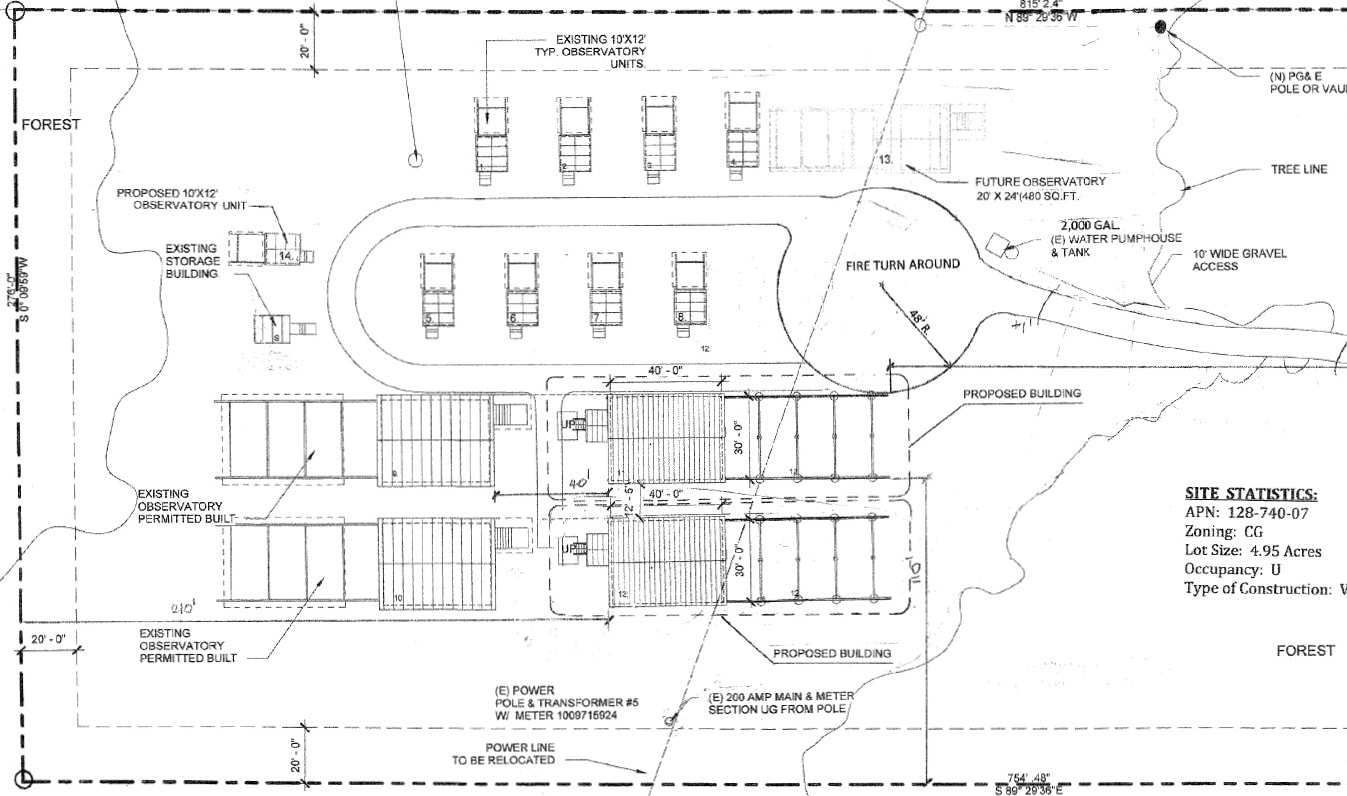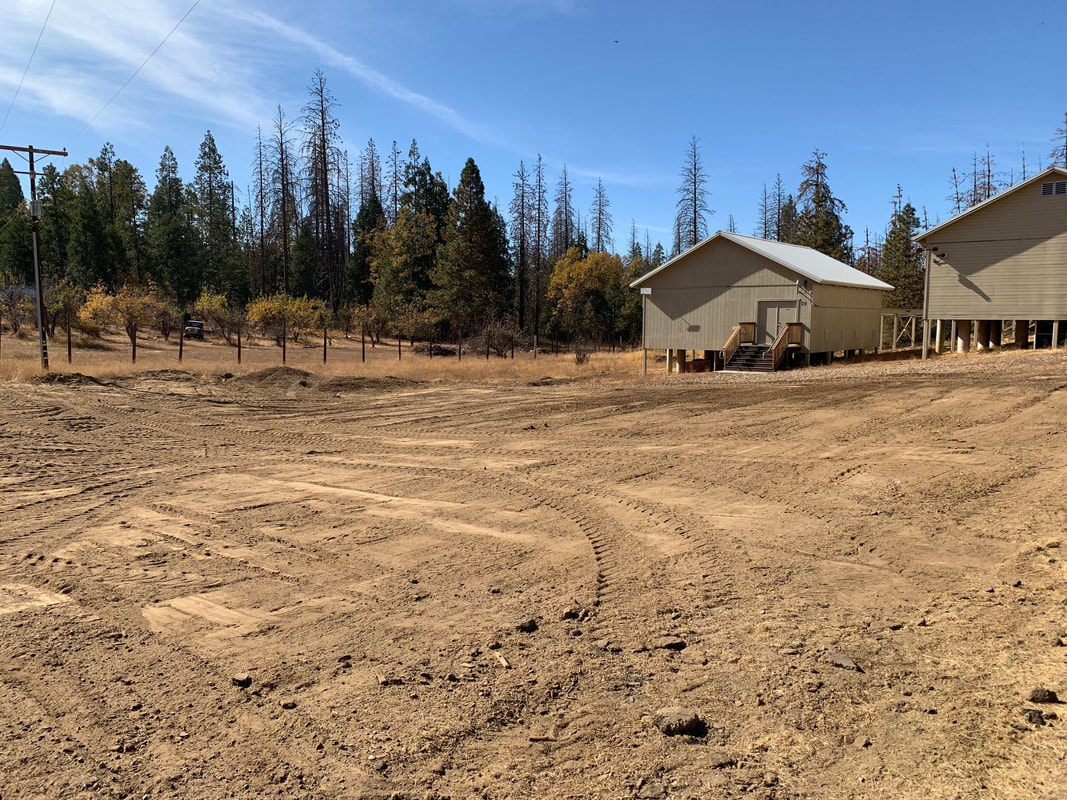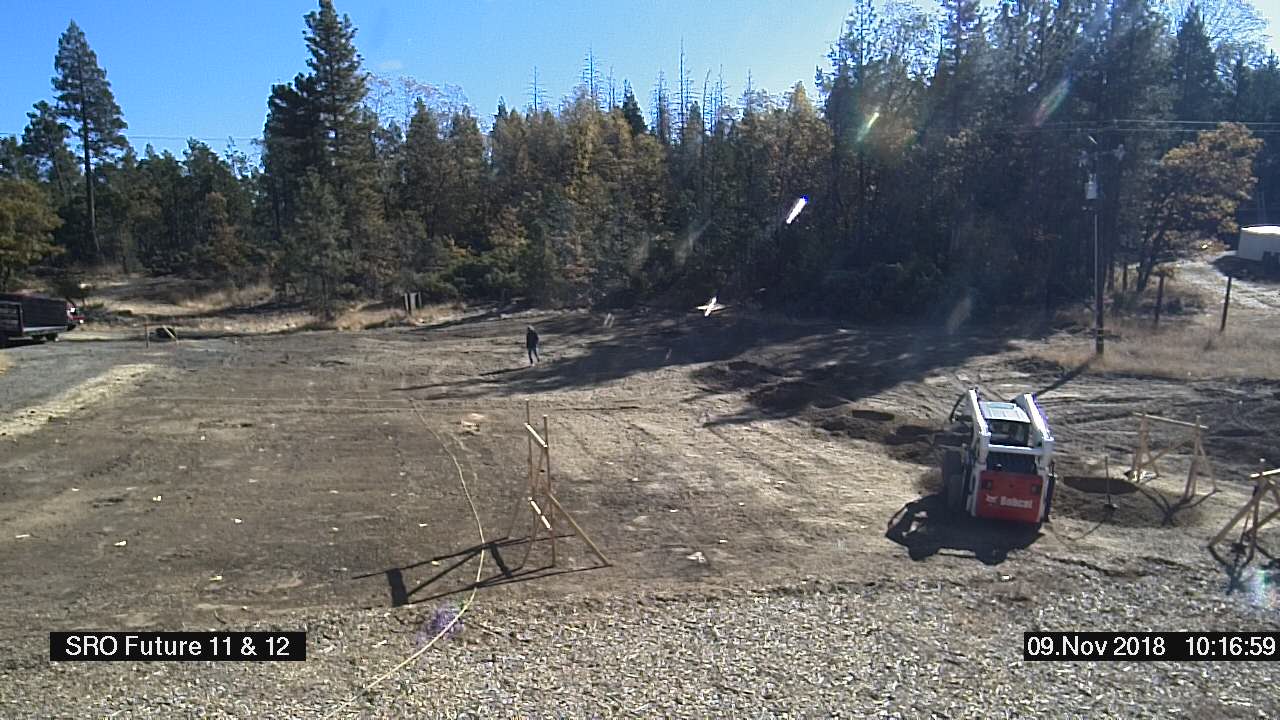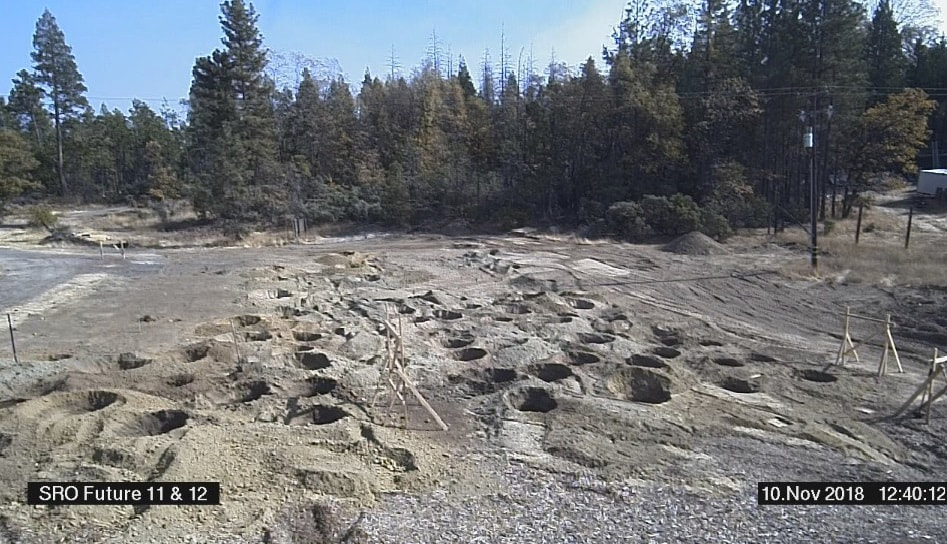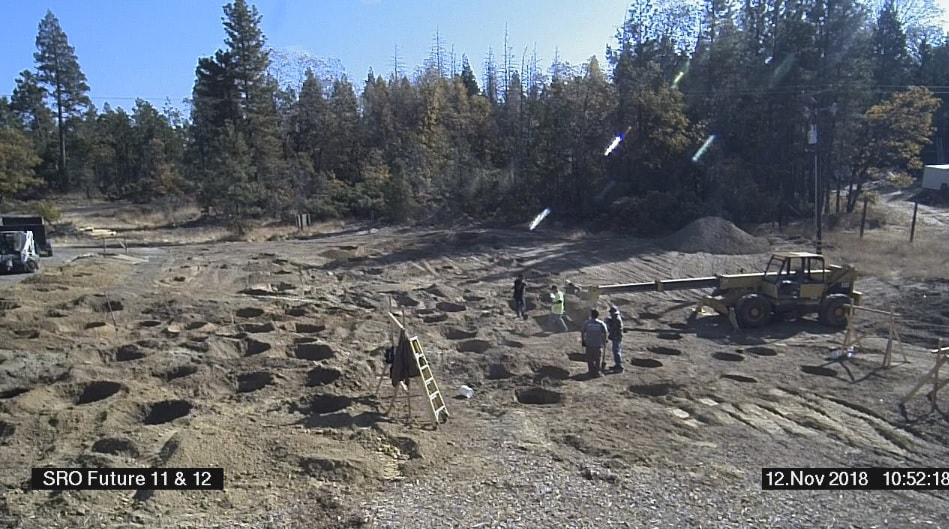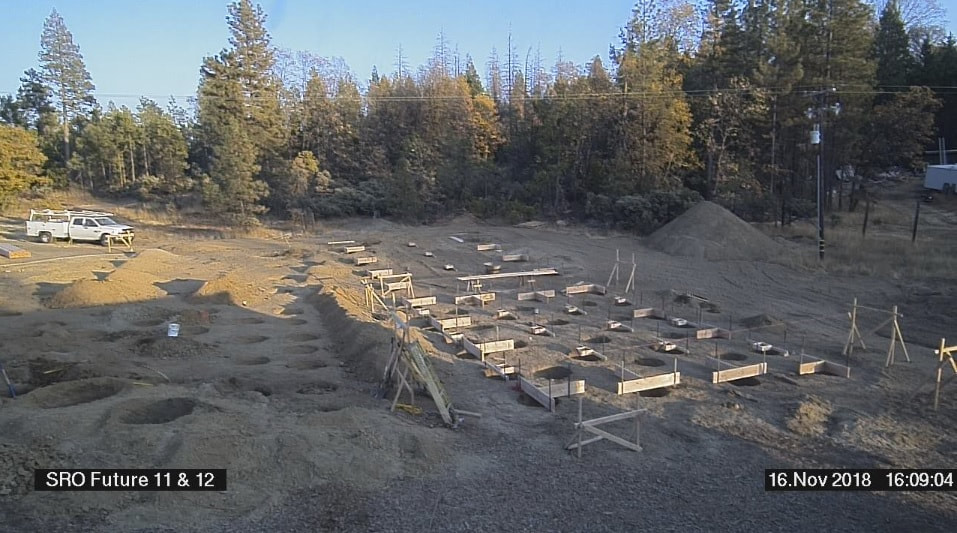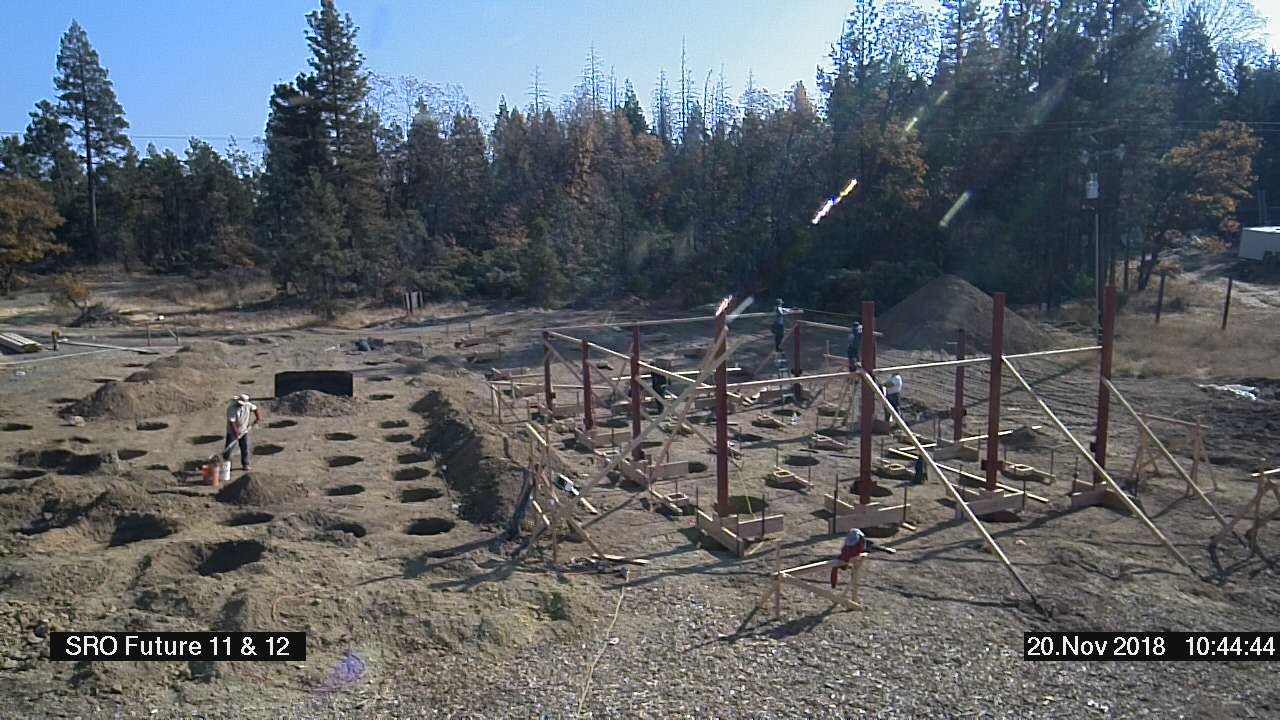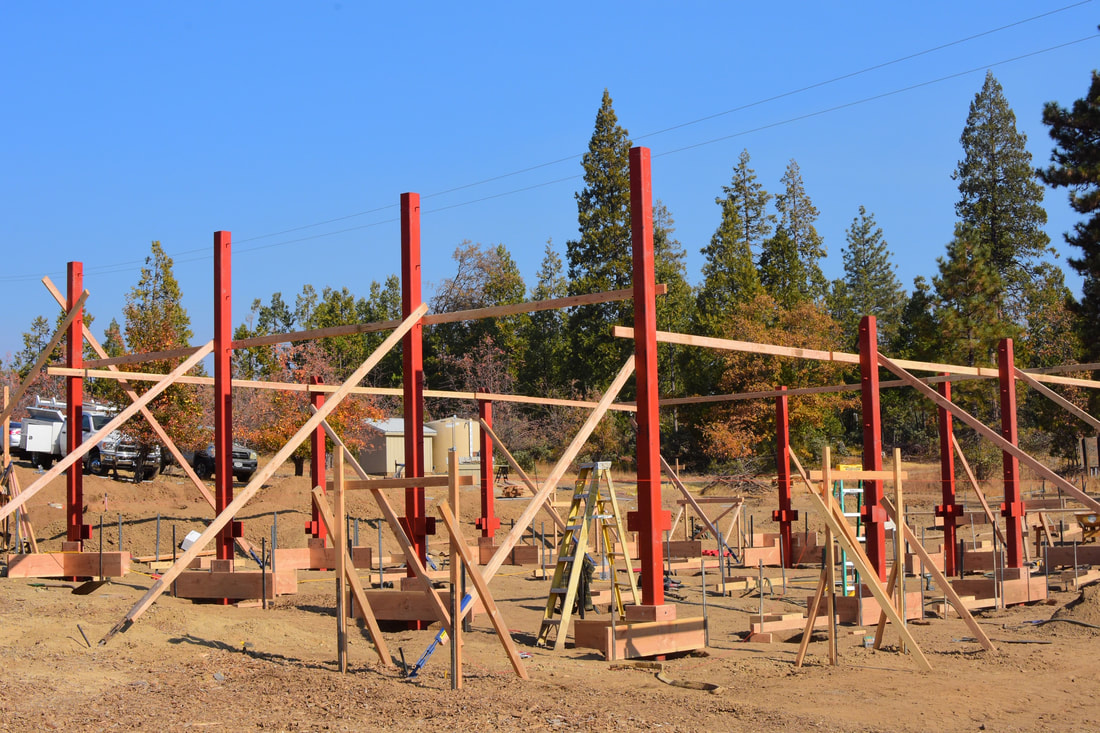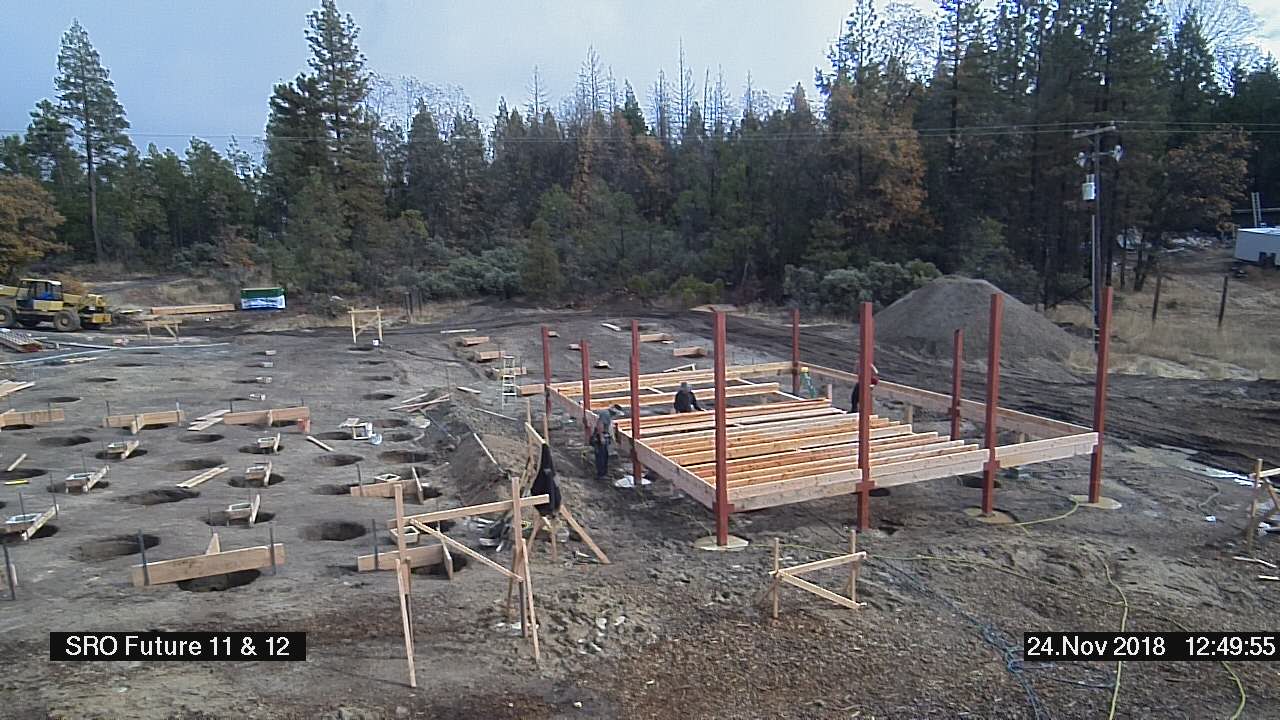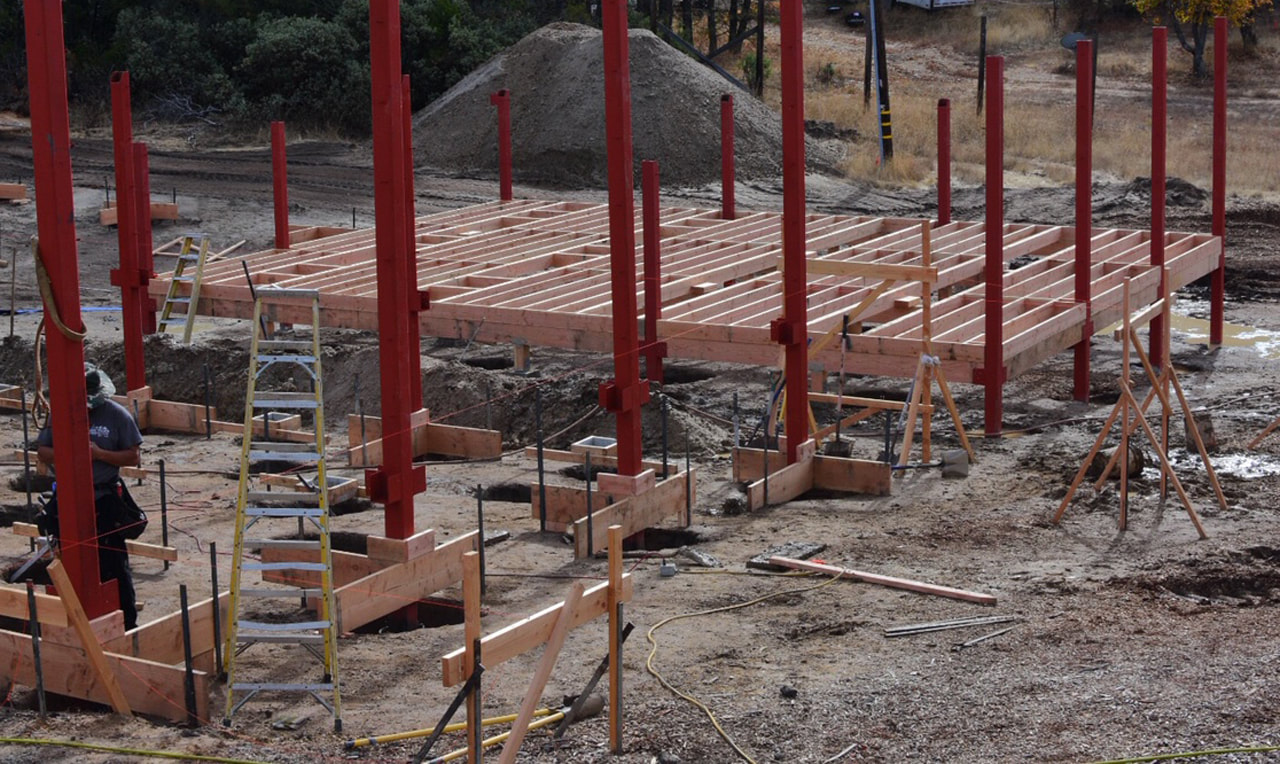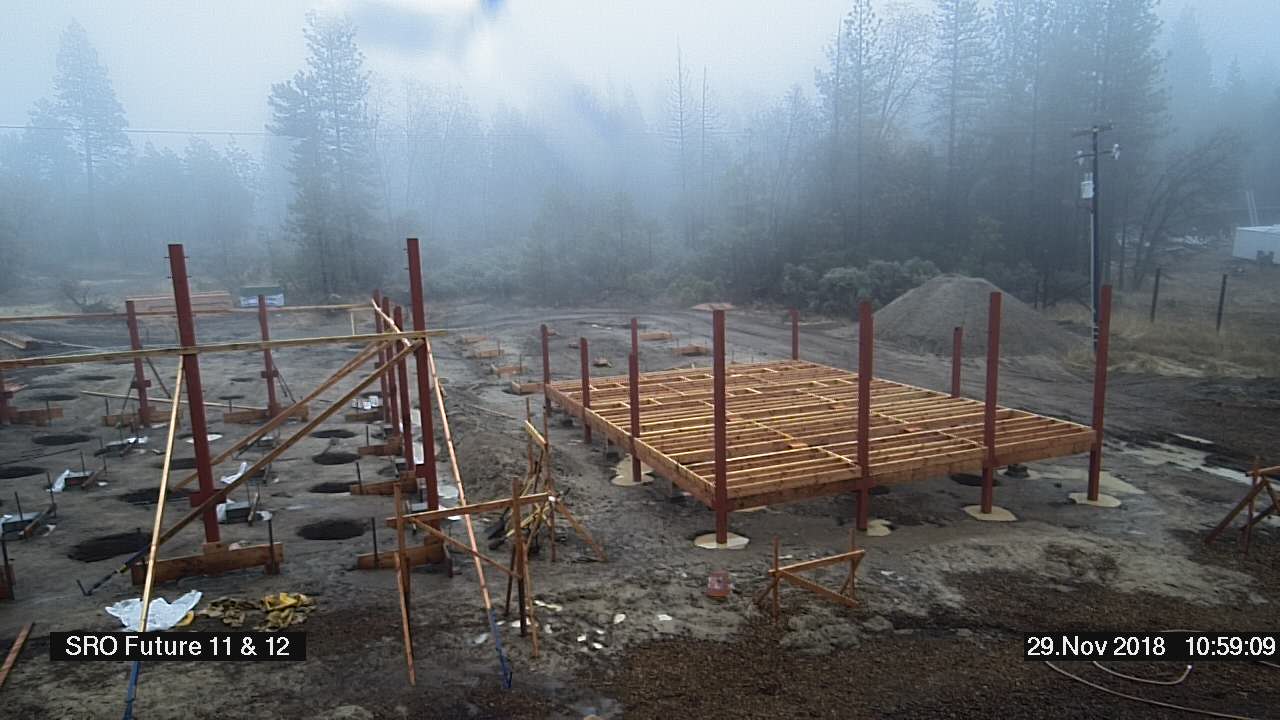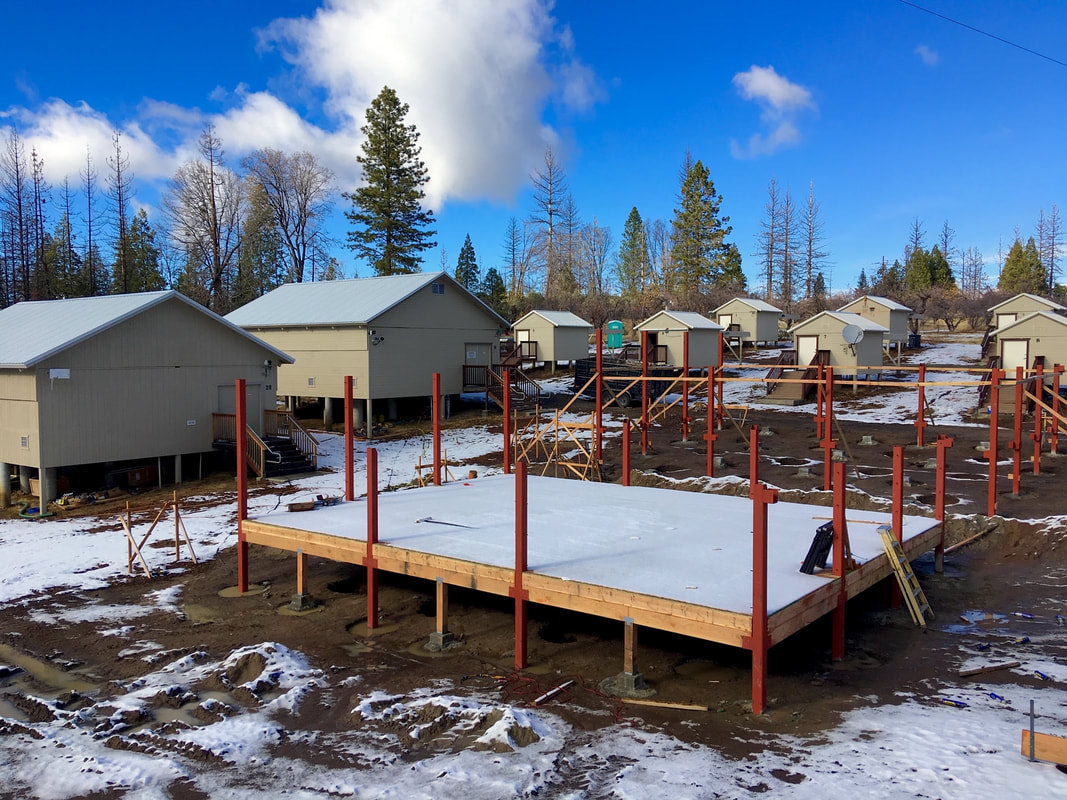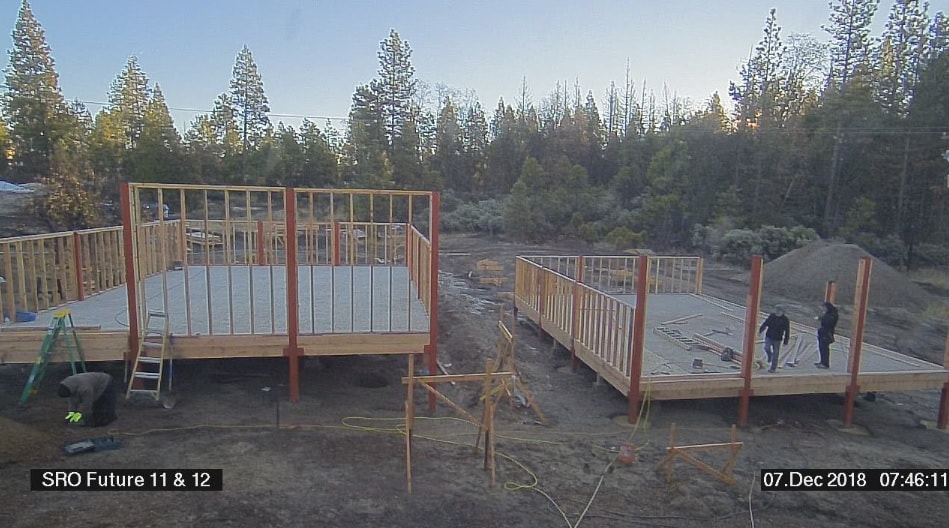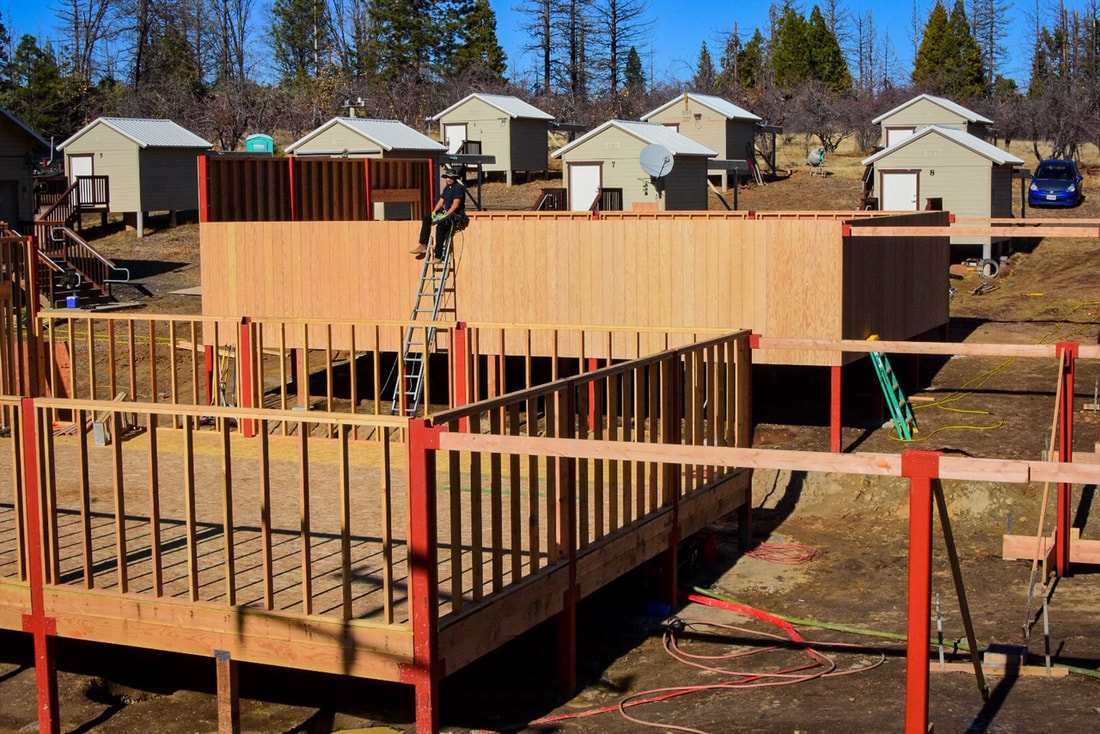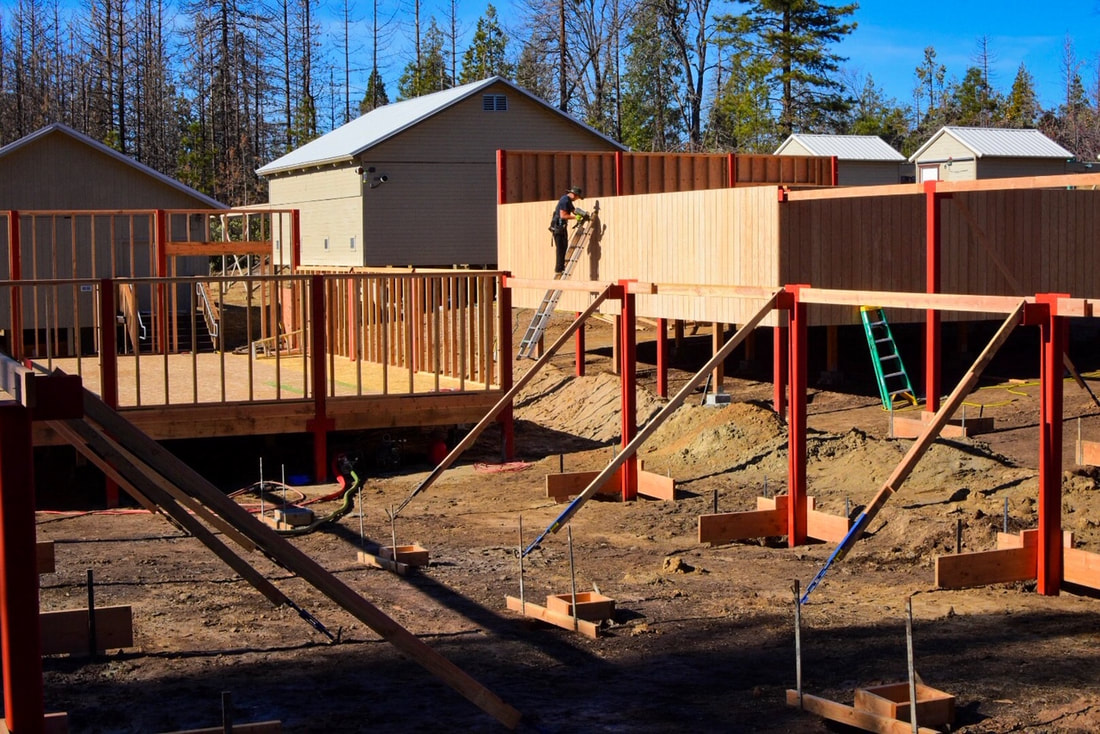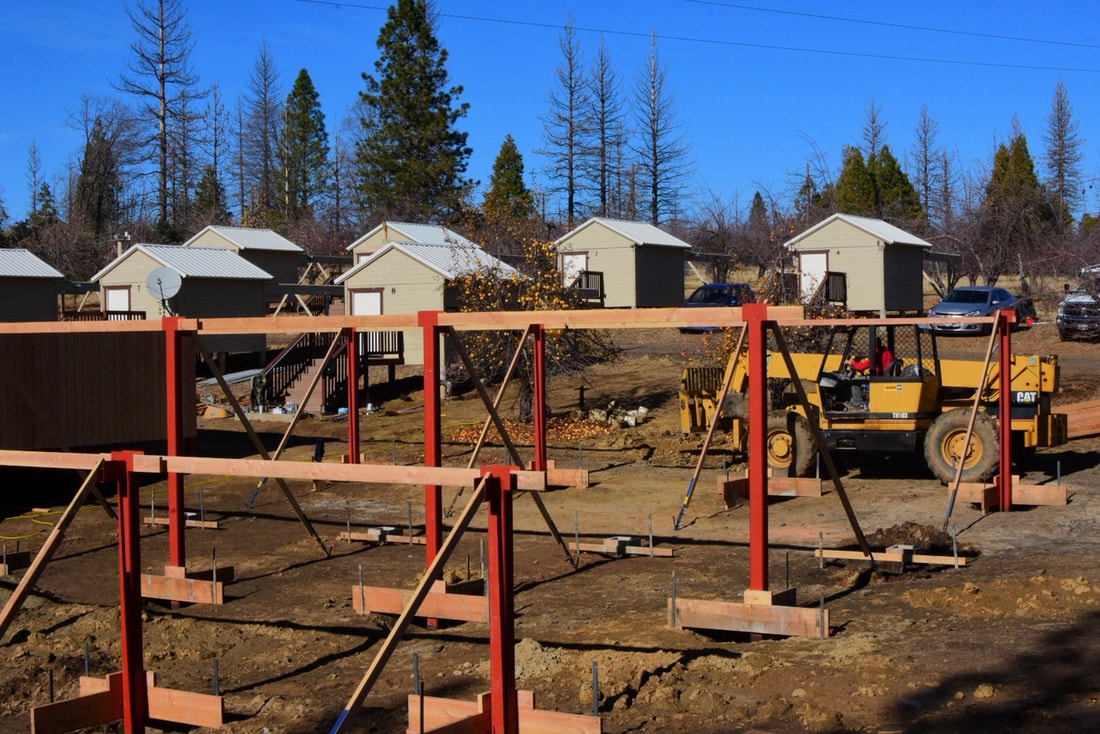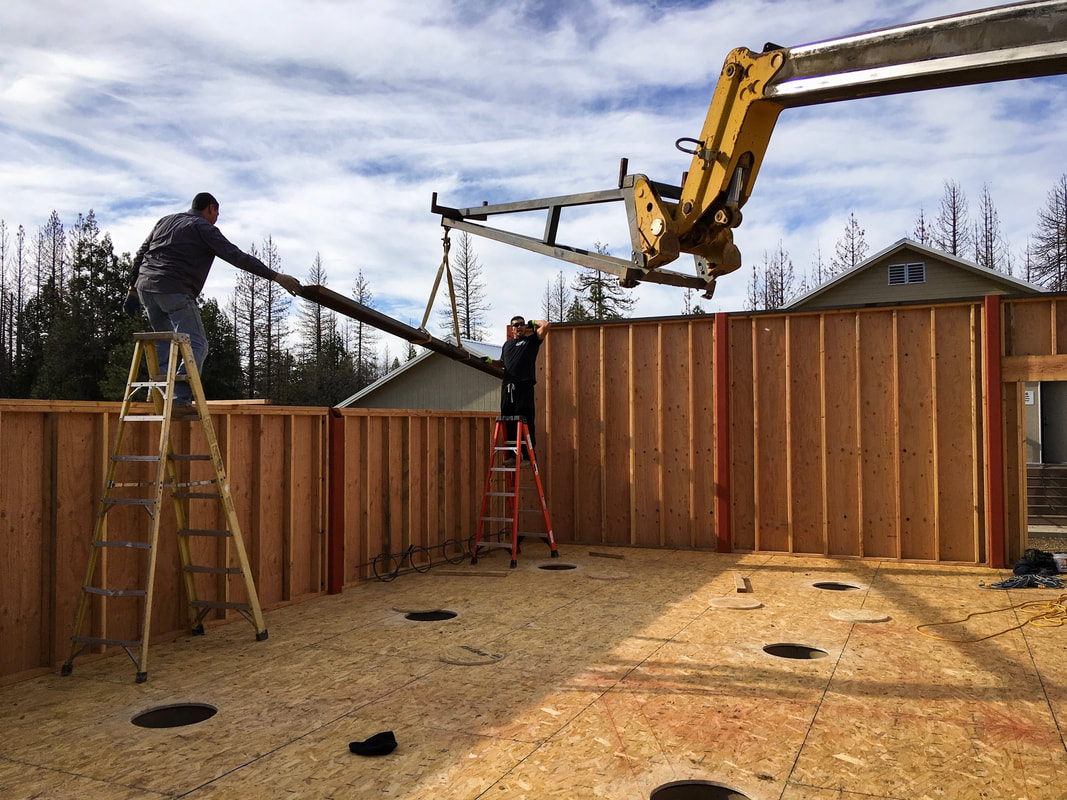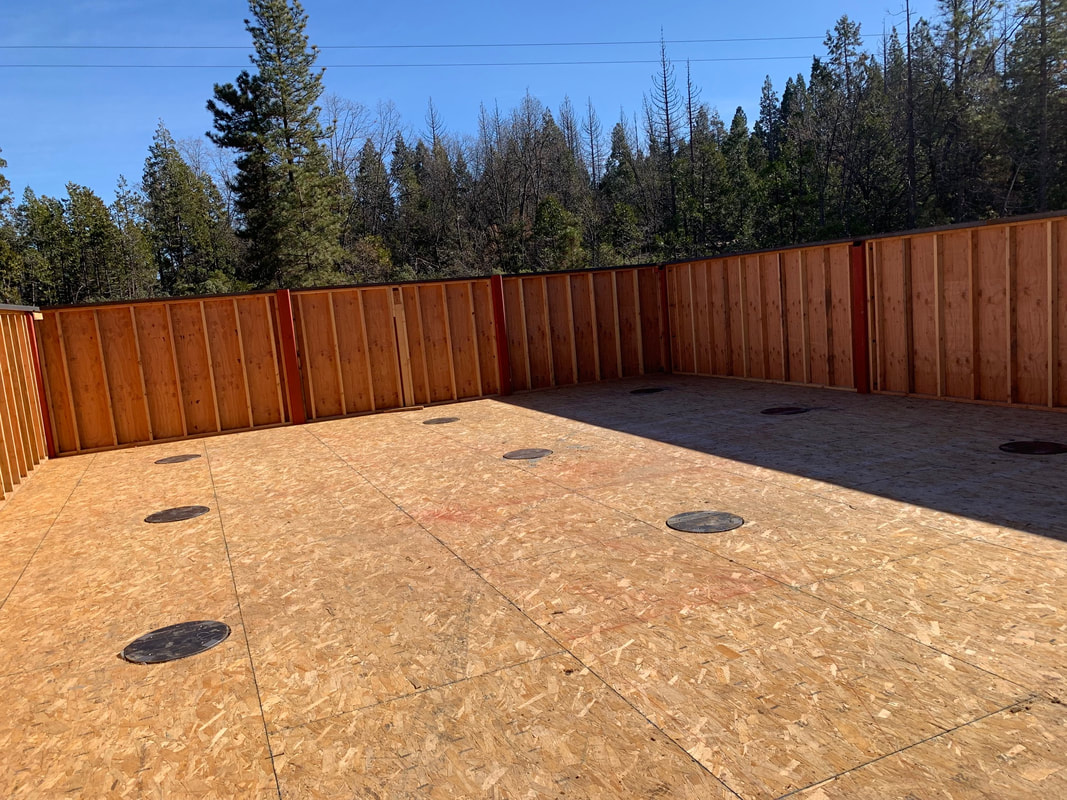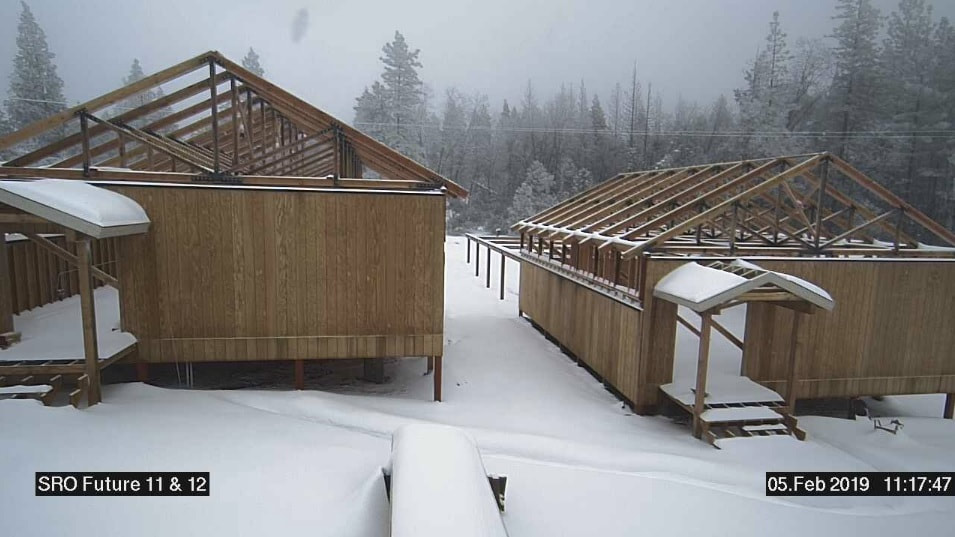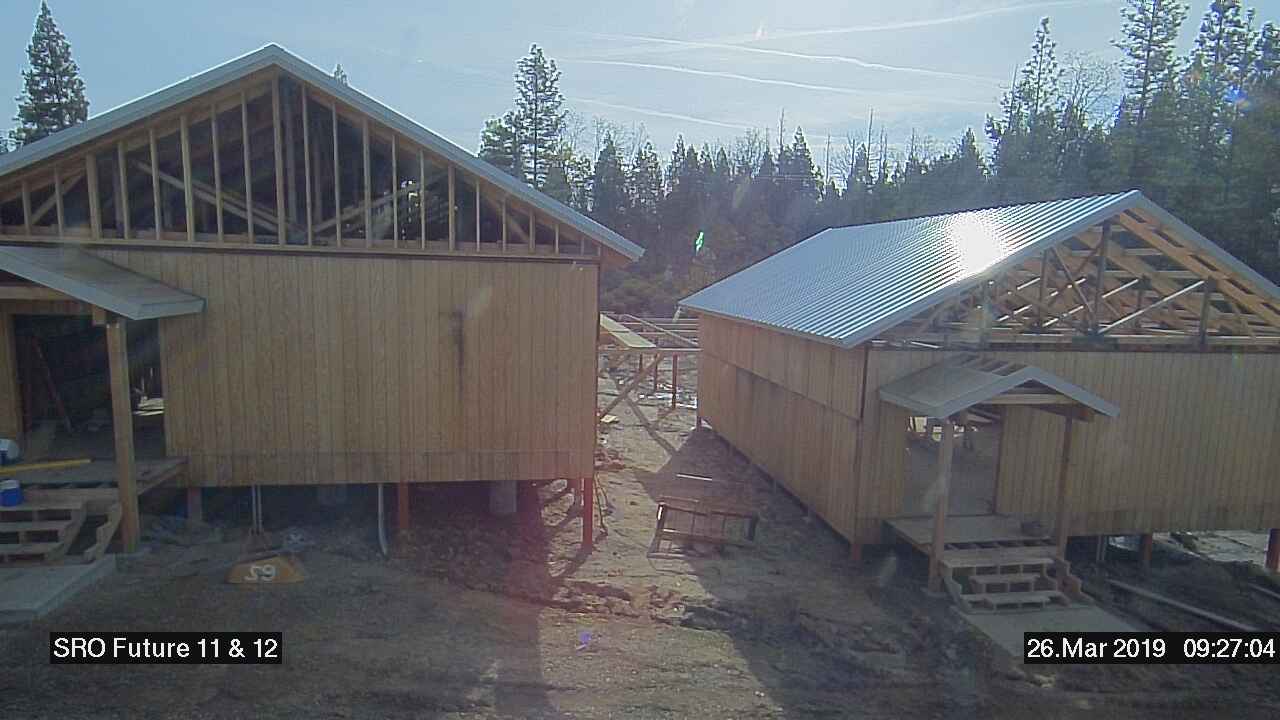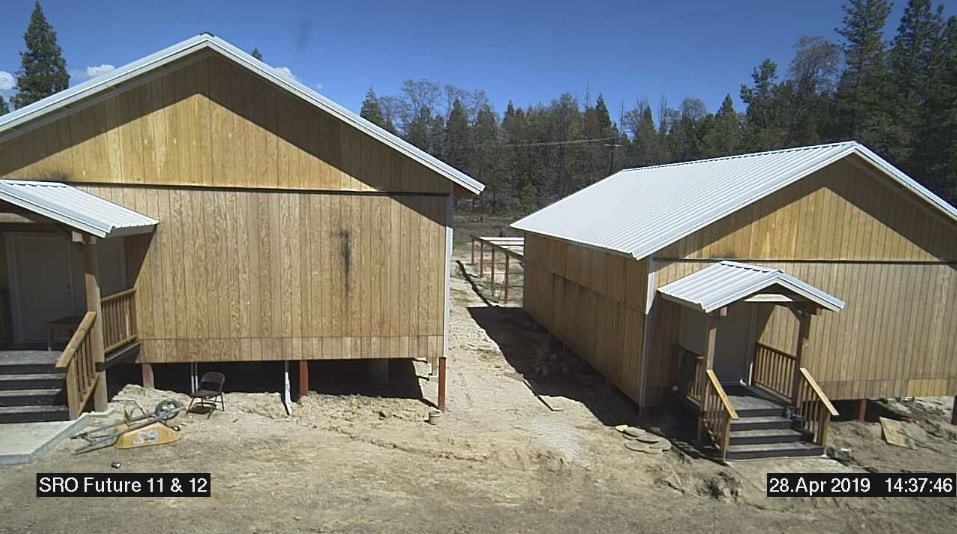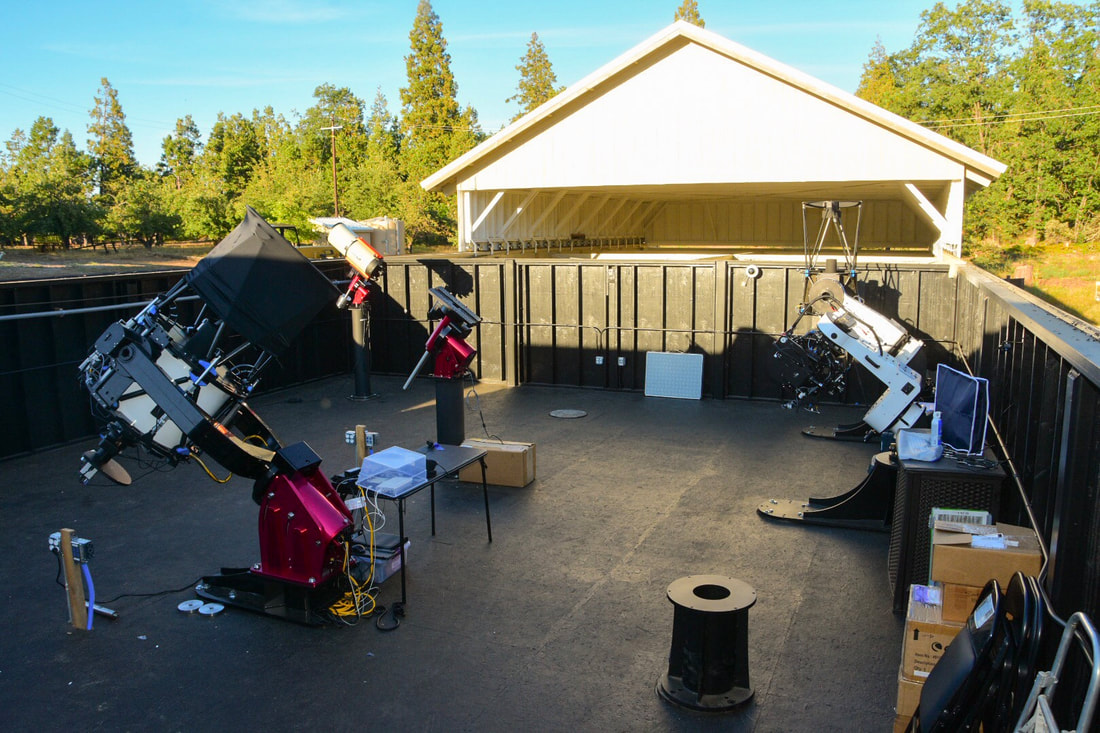Update of New Construction: Completed July 2019
|
As of November 1, 2018 signed permits were issued and construction began on November 2, 2018. This construction project included two large 30 x 40 foot multi-telescope observatories and one additional private 10 x 12 foot observatory at SRO. The two large observatories were completed in July of 2019. The new private observatory was recently issues permits and will commence. The larger observatories house 12 telescopes (including larger aperture telescopes, such as the Planewave CDK 700 or 24" RC telescopes on equatorial mounts). Contact us at Info@SROservice.com for questions or availability. Also contact us if you wish to place a larger one meter class telescope, for which a dome or roll-off roof observatory can be constructed.
In addition we recently placed an on-site machine shop. We also acquired a on-site headquarters for SRO with client facilities. SRO is now a complex of incompassing16 acres and continues to grow. As part of our continued commitment to infrastructure improvement we have added a back-up generator on-site. Currently our clients and all SRO systems have UPS battery backup, however, even in the unlikely event of a sustained power black-out, SRO will continue to operate. We understand the importance of keeping power available so that our clients can continue with uninterrupted data collection, even during these rare events. There is also built in network systems redundancy and internet provider back-up, in the unlikely event of a fiber optic system failure. These and other additions will help bring SRO to the standards we envisioned when we first founded the observatory in 2007. Our Site Plan: |
As construction progressed we inserted images periodically.

November 18, 2018: First steel studs were placed via crane. The final structure ws designed to be 30 x 40 foot and the steel greatly added to its structural integrity. Note the pouring individual foundation piers designed to support a wood floor, and not a single solid concrete slab. This was done to decrease the release of heat during the evening, which in turn helps preserve the local seeing conditions.
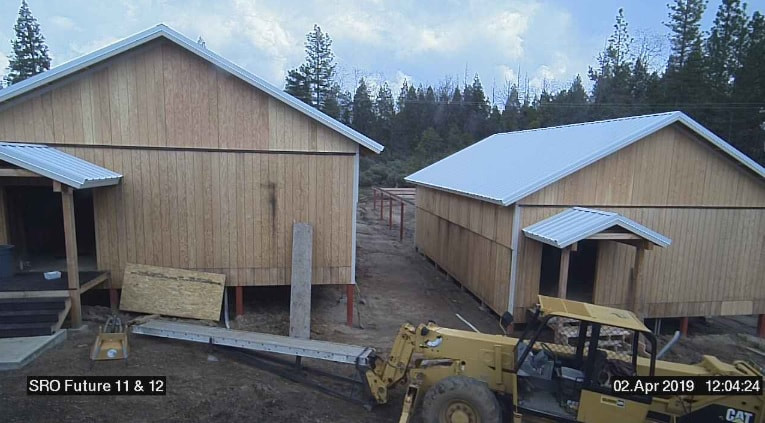
April 2, 2019: Roof and walls completed. Electrical being run and ethernet to follow. Project on track for completion late Spring or early Summer. Power lines currently overhead of buildings 11 and 12 will be moved by PG&E next week. A few tree's in the field of view of the buildings will be removed as well. This will result in unobstructed views to better than 20 degrees.
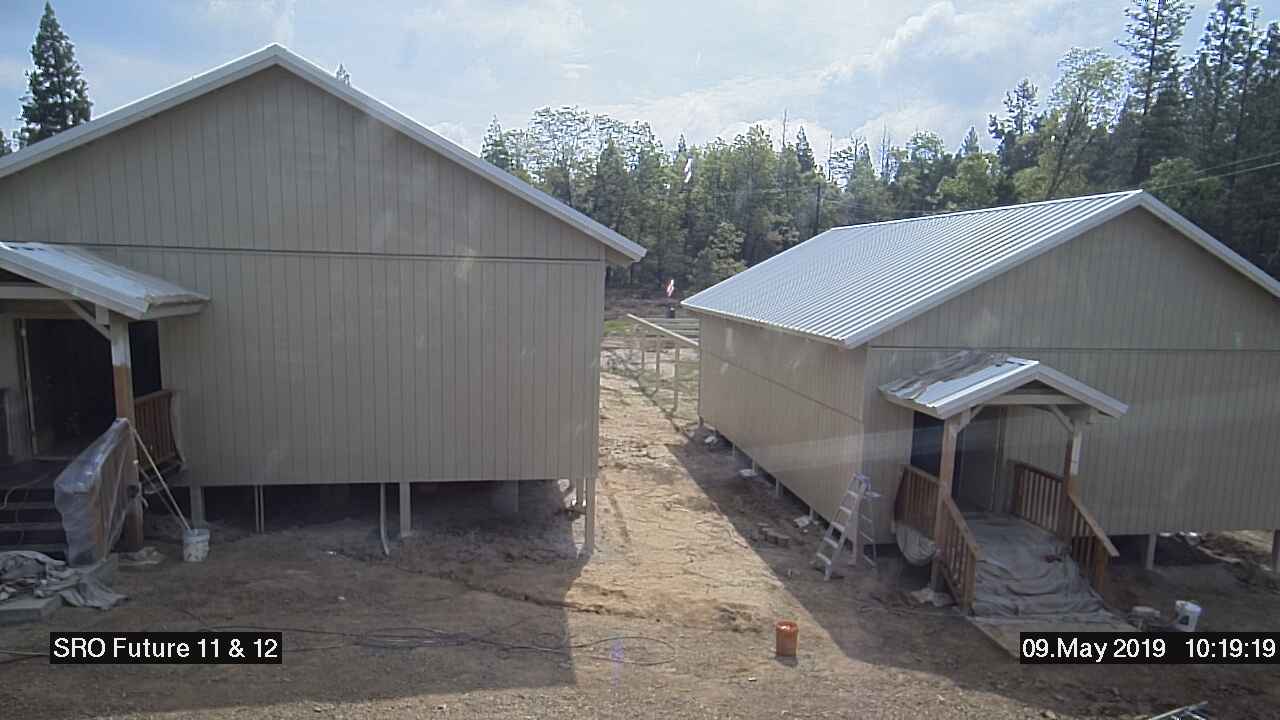
May 9, 2019: Painting of the observatories underway. The south walls will be painted with a special highly reflective paint which will significantly decrease heat absorbance. This will help decrease the minor cool-down times in the summer months by decreasing the daytime heat load sustained by the observatory.

